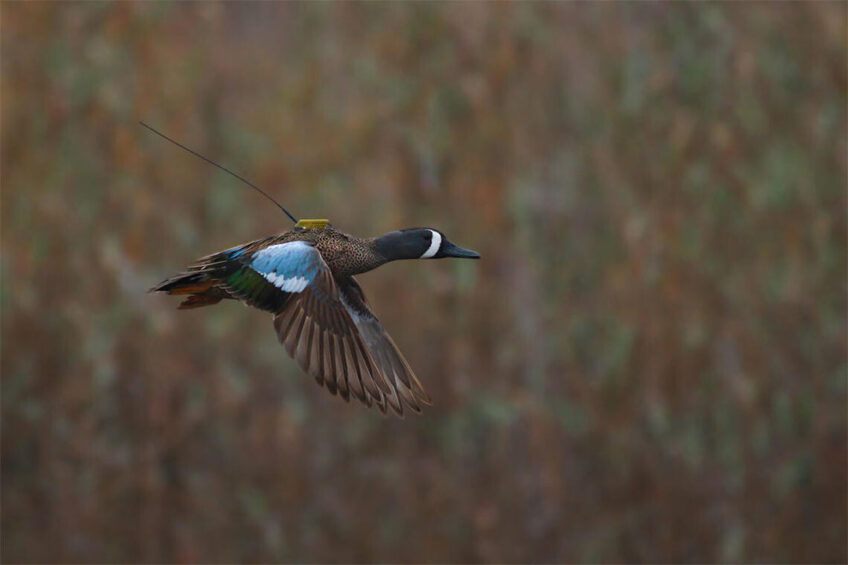Research maps elevated transmission risk of bird flu

A study by the US Geological Survey has uncovered the potential and elevated periods of risk for the blue-winged teal species of migratory waterfowl to transfer avian influenza to domestic poultry in commercial chicken and turkey facilities.
During the study, scientists identified the migration patterns of the blue-winged teal, a common carrier of avian influenza viruses, and when they were most likely to be on the ground and near domestic poultry facilities. Blue-winged teal is one of 11 dabbling duck species that regularly breed in North America. Dabbling ducks are the primary waterfowl species known to carry and shed avian influenza viruses in the US. The researchers believe that the results of this study will assist poultry industry officials, the United States Department of Agriculture and wildlife management agencies as they develop strategies to track wild birds and the occurrence of avian influenza to ensure viruses are not introduced into commercial facilities.
Migration and highest periods of risk
It was determined that poultry facilities in the northern states might be at higher risk for potential transmission during the ducks’ fall migration from mid-September through mid-November when blue-winged teal are in the closest proximity to domestic poultry facilities. In addition, commercial chicken operations in southern states may be at higher risk of disease transmission during the duck’s spring migration from March through April. However, in contrast to chicken operations, contact probabilities with commercial turkey facilities were relatively low in the spring.

In the US, an outbreak of avian influenza in poultry from 2014 to 2015 resulted in the loss of 50 million chickens and turkeys and cost the economy around US$ 879 million.
“This research serves as the first look into the periods of elevated transmission risk for avian influenza to poultry facilities,” said US Geological Survey research wildlife ecologist, Diann Prosser. “While the migration patterns of blue-winged teal are generalisable to other dabbling ducks, additional work is needed to understand how various waterfowl species differ in migration timing and habitat use, as well as which species carry the highest viral loads of the virus that causes avian influenza.”
AI prevention and innovative biosecurity measures
Lasers are being trialled on a Dutch free-range poultry farm to see if they can remove the threat of avian influenza contamination from wild birds. Read more…
Understanding migration patterns
Previous research has indicated that the prevalence rate for these viruses in blue-winged teal is comparable to other dabbling duck species. Additional research is being conducted by the team at US Geological Survey to better understand migration patterns for other waterfowl species and the potential overlap with poultry facilities. Scientists and partners are also studying the ability of North American duck species to become infected with avian influenza and their ability to carry and spread these viruses across the landscape.
This research was led by the USGS and done in collaboration with the USDA, the University of Maryland,
Environment and Climate Change Canada,
Louisiana Department of Wildlife and Fisheries and
US Fish and Wildlife Service.












